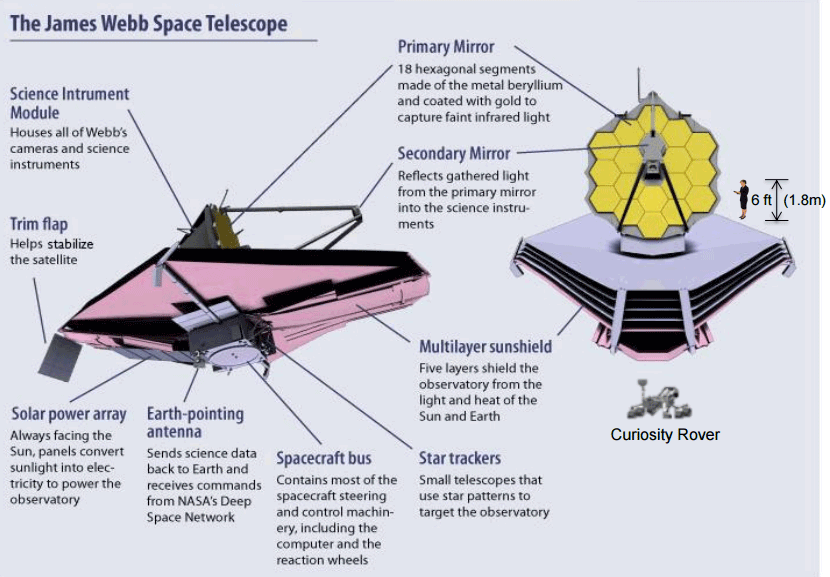A secondary mirror was installed on a James Webb telescope.

NASA engineers have successfully completed the installation of the secondary mirror on the James Webb telescope . The collecting surface of the telescope consists of 18 mirrors that are carefully adjusted to accurately reflect the light on the secondary mirror. For accurate focusing fasteners main mirror can not be displaced by more than 38 nanometers. The secondary mirror directs the collected light to scientific instruments behind the main mirror (see diagram).


')
Before launching, it is still necessary to carefully check that the system is able to withstand overloads during takeoff and a journey of 1.5 million kilometers.
The telescope is too large to fit in the cargo compartment of the launch vehicle, so it will unfold as origami after delivery to the site. Will have to deploy and secondary mirror. It is mounted on three spacers 7.5 m long. These are hollow composite tubes with a wall thickness of about 1 millimeter - a lightweight and durable material that can withstand ultra-low temperatures in open space.
Unlike the hexagonal main segments, the secondary mirror is round and convex. The surface quality is almost perfect: at temperatures around absolute zero, a beryllium mirror should not deform by more than a few nanometers. Since beryllium does not reflect light in the near IR range, the mirror is covered with a thin layer of gold (3 grams on the entire surface). All mirrors are made by Ball Aerospace & Technologies Corp. Installation is done by engineers from Harris Corporation. These are two subcontractors of Northrop Grumman, which is responsible for assembling and setting up the telescope - a joint project of NASA, the European Space Agency and the Canadian Space Agency.
The telescope of James Webb will be sent into orbit in October 2018. It will be located at Lagrange L2 of the Sun-Earth system. This orbital observatory - the largest in history - is supposed to replace the Hubble Space Telescope.

The work of engineers broadcast two webcams: www.jwst.nasa.gov/webcam.html .
Source: https://habr.com/ru/post/391481/
All Articles